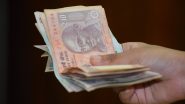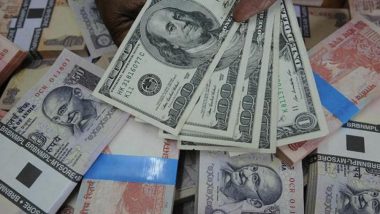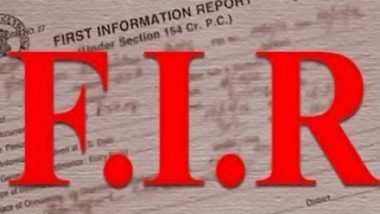Our country has made history in 2018, for celebrating 72 glorious years of freedom. Our currency also made history for crashing to an all-time low exchange rate by crossing the Rs. 70 mark to one U.S. dollar.
The rupee slipped as much as 0.2 percent to 70.08 per dollar in Mumbai but recovered quickly to 69.97 at the interbank foreign exchange market. In the opening trade, the rupee had recovered from an all-time low of 69.91 and strengthened by 23 paise to 69.68 against the U.S. dollar but a sell-off of the Turkish Lira put pressure on the Indian rupee which has gone down in value by 9 percent against the U.S. dollar in 2018 to become Asia’s worst performing currency.
The rupee’s marginal recovery was attributed by some forex traders to state-run banks selling dollars, probably on behalf of the Reserve Bank of India. The RBI has sold off $23 billion in foreign reserves since April this year to check the Indian currency’s volatility against the American greenback.
As the country celebrates its 72nd Independence Day, let's look at the rupee's journey since 1947 to 2018.
Indian currency’s value in 1947
Since India was under British rule, the rupee was pegged to the British pound which meant that India’s foreign exchange reserve was held as the British Sterling. As of July 1947, before partition a document published by the U.S. State Department says that India had a balance of about £1,250 million. Correspondingly, post partition we were left with about half a billion pounds in our foreign exchange reserves. From 1927 to 1966, the value of the Indian currency was: 13 rupees = 1 pound sterling.
1966 -1971
The peg of the Indian rupee to the sterling was maintained until 1966 when the rupee was devalued and then pegged to the U.S. dollar at a rate of 7.5 rupees = 1 dollar. This peg lasted until the U.S. dollar was devalued in 1971 when the U.S. terminated convertibility of the U.S. dollar to gold. This was the end of the era of the Bretton Woods International Monetary System.
1971 - 1980
These years saw India headed by Indira Gandhi and Morarji Desai. The Indian rupee fluctuate between its pegged rate of 7.5 to a dollar to about 10 to a dollar.
1980-1991
These years saw the country receive two economic shocks. Indira Gandhi’s imposition of emergency saw the rupee's value decline and it breached the 10 to a dollar mark around 1983. After her death, it crossed 12 to a dollar and by 1989 when Rajiv Gandhi was in power, was at 16 to a dollar.
1991-1996
After VP Sinha, P.V. Narsimha Rao became India’s prime minister and he is credited with opening up India’s economy. During his governance the Indian rupee saw one of the steepest falls going from 22 to 35 rupees to a dollar.
1996-1998
One of the most unstable political years in recent history, the Indian rupee under HD Deve Gowda floated around the 36 mark. However, a year later under IK Gujral the rupee went from 36 to 41, crossing the 40 mark.
1998-2004
Under Atal Bihar Vajpayee, the country went to war with Pakistan and the fluctuation in the currency reflected the economy’s state. The Indian rupee fell from 41 to 48 in 2002 and stabilised around the 45 to a dollar mark by 2004.
2004-2013
Under Manmohan Singh, the economy grew at a fast pace but the global economic crisis impacted India’s foreign reserves through high crude oil prices and a volatility in the foreign exchange market. The rupee swung from 45 in 2004 to 62 in 2013 and appreciated to 59 to a dollar in May 2014.
2014-to date
The slide in the rupee continued under Narendra Modi and it breached the 70 to a dollar mark on August 14. The currency recovered marginally in closing trade to close at 69.
However, apart from selling its foreign reserves which cannot be a long term solution, the Indian Central Bank seems to be on the back foot to arrest the rupee’s slide and there has been no word from the ruling dispensation either.
(The exchange rates have been kept as whole numbers and have been referenced from knoema.com)
(The above story first appeared on LatestLY on Aug 15, 2018 05:11 AM IST. For more news and updates on politics, world, sports, entertainment and lifestyle, log on to our website latestly.com).













 Quickly
Quickly



















